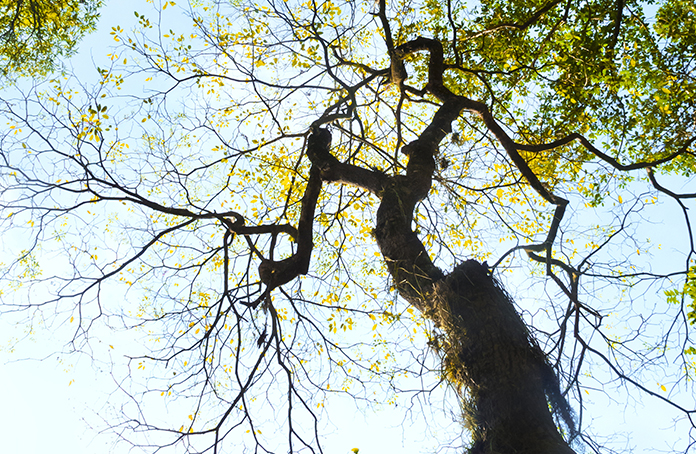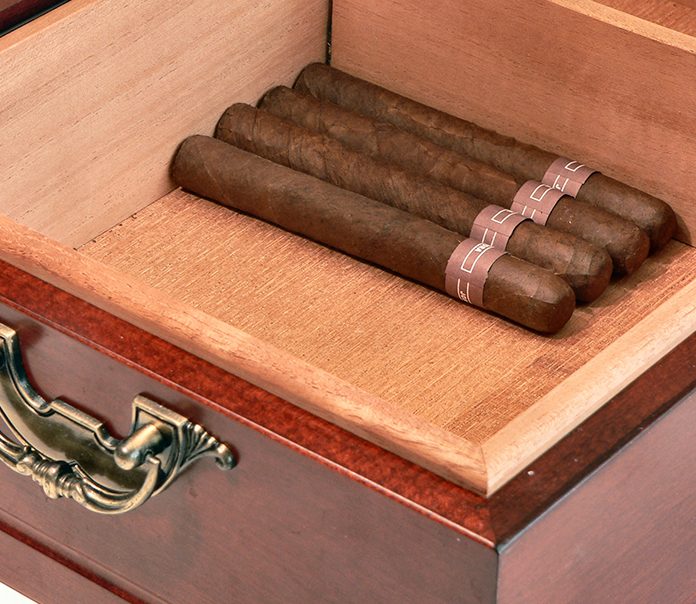Ahhh… The Spanish cedar, what would we do without it? Every cigar aficionado heard of the Spanish Cedar. This is the wood that most cigar boxes are made of, and which thin boards of it line the interior of humidors. But very few are aware that the Spanish Cedar is neither Cedar nor Spanish!
Trusted on the Amazon

The Latin “Cedrela odorata” means fragrant Cedar, but the tree is actually of the Mahogany genus. Real Cedar trees are evergreen, never shedding their leaves, whereas the Spaniard Cedar is deciduous, a tree that loses its leaves each winter and dry season.
Reaching heights of more than ninety feet, as high as a ten-story building, this giant of the forest’s trunk can extrend to seven feet in diameter! Its bark is gray and grooved, its leaves are composed of 10-30 leaflets and the flowers that adorn it are small and white.
Boards made of Spanish Cedar are blessed with many outstanding qualities. These qualities make them ideal for a host of applications. The first characteristic worth noting is how the wood reacts to water. Spanish Cedar wood doesn’t crack, swell or lose its shape due to exposure to moisture, and best of all, it won’t rot when wet.
But that’s not all! The Cedrela is commonly used as a bug repellent, particularly against the pests that tend to devour wood and perforate it. Even the ever troublesome Termites are deterred by this miracle wood! It seems like bugs are just not fond of the piney fragrance emitted by the Spanish Cedar’s essential oils.
For these reasons, as well as its light and buoyant nature, the tribes indigenous to the South American tropics would use its wood to make their boats. In fact, I have had the pleasure of sailing the Amazon River in a Spanish cedar canoe on more than one occasion.
Why is it so good for the cigars?
The most prominent of use for this wood today is found in the Cigar world. In fact, Spanish Cedar is so closely linked with cigars that it’s widely known by its nickname “Cigar box Cedar”.
Lining the interior of humidors with this wood – which does not experience any damage from the moisture – ensures that the box remains tightly sealed, preventing the essential humidity from escaping. This lining also prevents decay, and keeps insects away. Moreover, Spanish Cedar absorbs excess moisture, thus helping to maintain a uniform moisture level. The wood’s resistance to moths and other insects assist in keeping the humidor sanitary.
The heart wood of the Spanish Cedar is a pinkish-brown color when freshly cut, which becomes a chestnut brown, with dark streaks of character, upon. The boards used for lining humidors and cigar boxes are not processed, but kept in their natural state. As such, they emit a piney fragrance, which becomes more pronounced when wetted.
The essential oils of the wood help the various Tobacco leaves in “marrying” each other and contribute to the aroma of the cigars, just as Oak does in wine, cognac and whiskey casks. A good “marriage” will yield the most delicious smoke. With all these benefits, It’s no wonder that Spanish Cedar boards are also used for lining the walls of aging cigars rooms in cigar factories and walk-in humidors at good cigar stores.
While it is the most popular choice for Cigar boxes, the Spanish Cedar has six very close relatives whose wood is also used for making cigar boxes and humidors.
So how did it become Spanish?
The Spaniard conquistadors became aware of the special qualities of this wonder tree on their travels to South America. They quickly adopted the use of this new wood, most notably when constructing their new churches. This is one of the leading contributors as to why so many Spanish churches have withstood the ravages of time. Their introduction of the wood into the western world is how it acquired the Spanish misnomer.
But why is it called Cedar? Well, the true Cedar family is called Cedrus, and this particular tree is called Cedrela. Cedrus… Cedrela… qué sé yo? The locals called it Cedro. Cedro in English is Cedar, and thus the Spanish cedar was born.
How much of a Cedar Aficianado are you? Did we miss anything in the article? How critical do you think cedar is to preserving, or enforcing, the cigar profiles?





